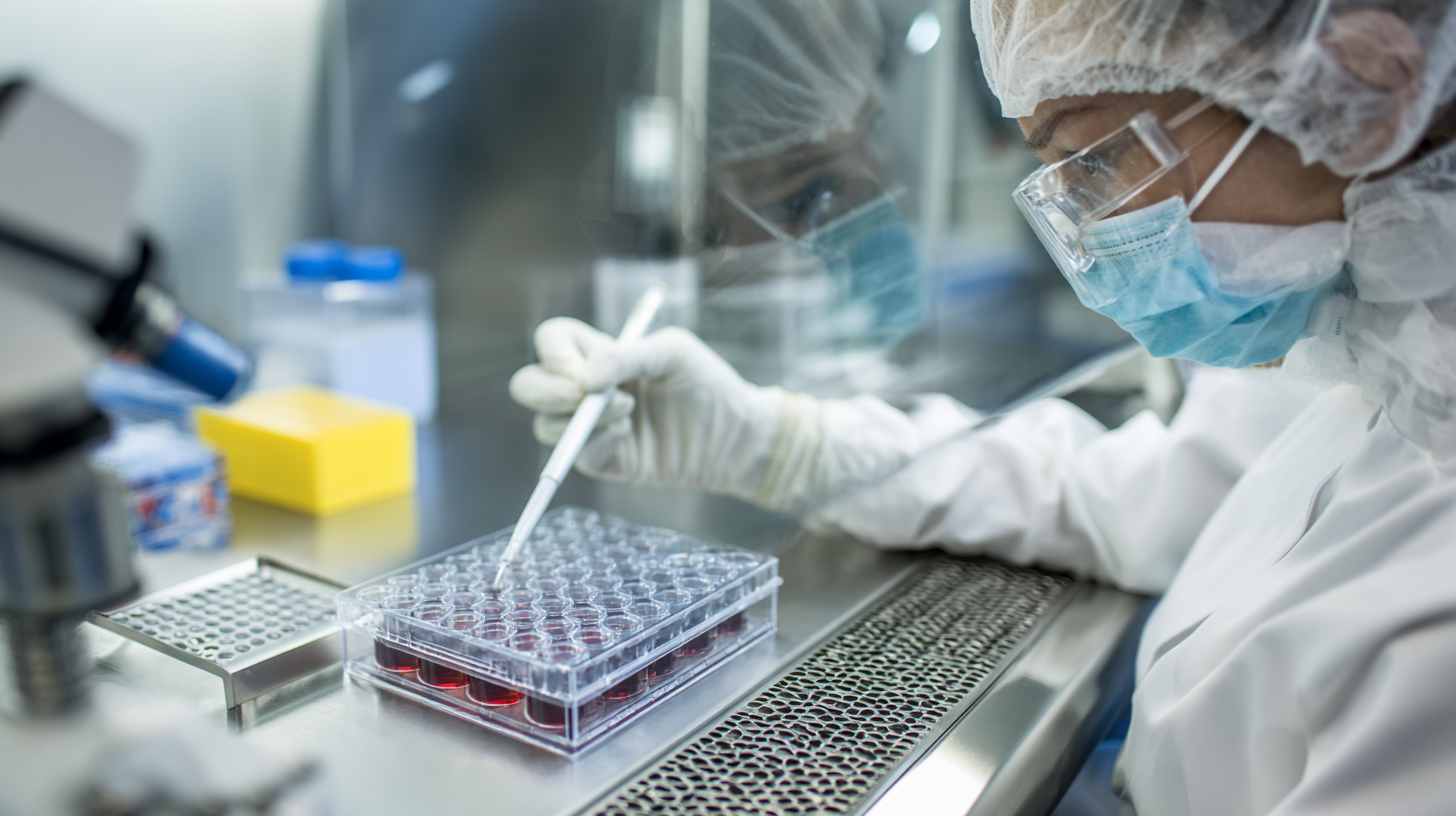 +86 178 5514 5298
+86 178 5514 5298
Leave Your Message
-
 CONTACT NUMBER
CONTACT NUMBER -
 CONTACT NUMBER
CONTACT NUMBER -
 CONTACT NUMBER
CONTACT NUMBER



In recent years, the landscape of global manufacturing has been significantly shaped by rigorous quality standards and compliance regulations, especially within the pharmaceutical and biomedical sectors. According to a report by the International Chamber of Commerce, the market for UN 3373 pack solutions has seen a consistent growth rate of approximately 7% annually, driven by the increasing demand for safe and reliable transportation of diagnostic specimens. The UN 3373 pack, recognized for its high standards in packaging biological materials, offers manufacturers a critical advantage in ensuring compliance with international shipping regulations. As China cements its position as a leading player in global manufacturing, understanding the intricacies of industry-specific certifications—including import and export standards—becomes essential for businesses aiming for excellence. This blog will explore the essential elements of achieving top-tier quality in UN 3373 packaging, ensuring safe transport while navigating the complexities of industry regulations.

In recent years, the quality of UN 3373 packaging in China's manufacturing sector has reached new heights, reflecting the country's commitment to high-quality development and innovation. As China's manufacturing output accounts for 35% of the global total, the nation's manufacturers are increasingly focusing on producing internationally recognized packing solutions that comply with stringent safety and quality standards. This dedication to excellence is critical as firms navigate the competitive landscape and aim to enhance their global footprint.
To further capitalize on this trend, manufacturers should prioritize the integration of advanced technologies in their production processes. Embracing automation and data analytics can streamline operations and reduce costs while maintaining the high standards essential for UN 3373 compliance. Additionally, fostering a culture of continuous improvement and innovation will enable companies to adapt more swiftly to market demands.
Tips: Companies should also consider investing in employee training programs that emphasize quality control and manufacturing best practices. Engaging workers at all levels in quality initiatives fosters a sense of ownership and ensures a commitment to excellence throughout the production process. Lastly, collaborating with international partners can provide valuable insights and drive innovation within the supply chain, further enhancing the reputation of Chinese manufacturing on the global stage.
This chart illustrates the rise in quality of UN 3373 packaging in China's manufacturing sector over the past five years, demonstrating a positive trend towards better compliance and standards in the industry.
In recent years, Chinese manufacturing has undergone a transformative evolution, driven by groundbreaking innovations that are setting new benchmarks for quality and efficiency. By 2025, the key innovations expected to shape this landscape include advancements in automation, artificial intelligence, and smart manufacturing techniques. These technologies are enhancing productivity, reducing production costs, and significantly improving product quality, making China a leader in the global manufacturing arena.
One specific area where this excellence is apparent is in the production of UN 3373 compliant packaging. This specialized packaging for biological samples is critical for ensuring safety and compliance in the transportation of infectious substances. Innovations in materials science have led to the development of more durable and lightweight packaging solutions that meet stringent international regulations, while also being eco-friendly. As China continues to invest in research and development, the quality of these products not only meets but often exceeds global standards, reinforcing the country's position as an indispensable player in the worldwide supply chain.
In today's global landscape, the transportation of biological samples, particularly under UN 3373 packaging regulations, has become a critical focus for laboratories and healthcare providers. Recent analyses reveal that improper packaging can lead to significant delays and risks in sample integrity. According to industry reports, compliance with UN 3373 not only ensures the safety of transport but also enhances the reliability of test results, which is crucial when handling specimens such as human serum or cultures of blood-borne viruses.
The best practices in UN 3373 packaging emphasize the importance of using triple packaging systems to prevent leaks and contamination. This method comprises a primary receptacle, a secondary container, and an outer package securely sealed and labeled. Laboratories that excel in this area are able to effectively minimize transport risks. A comparative study highlights that organizations adhering strictly to these guidelines see a 30% reduction in sample loss during transit, significantly bolstering the efficiency of diagnostic processes. Furthermore, with the rise of COVID-19, the demand for swift and compliant transportation of patient specimens has escalated, underscoring the necessity for robust packaging solutions in mitigating public health risks.

The evolution of digital transformation is reshaping manufacturing standards and quality in unprecedented ways. In this era, manufacturers are leveraging technologies such as the Internet of Things (IoT), artificial intelligence, and big data analytics to enhance their production processes. These innovations not only streamline operations but also improve product quality and ensure compliance with international standards, including UN 3373 packaging guidelines for biological substances. With enhanced tracking systems and data analysis, manufacturers can quickly identify quality issues and respond proactively, leading to significant improvements in overall efficiency.
**Tip 1:** Adopt digital tools that enable real-time monitoring of production processes. By integrating IoT sensors, manufacturers can detect deviations from quality standards instantaneously, allowing for quick corrective actions.
**Tip 2:** Invest in training programs for employees to adapt to new technologies. A skilled workforce is essential to harness the full potential of digital innovations, ensuring that every team member understands how to maintain quality standards.
By embracing digital transformation, companies can not only meet but exceed global manufacturing standards, establishing themselves as leaders in quality and reliability.
As we look towards 2025, the landscape of UN 3373 compliance is expected to evolve significantly, driven by advancements in technology and shifts in regulatory frameworks. The emphasis on quality in packaging for biological substances under these regulations reflects a growing awareness of safety and environmental concerns. Manufacturers are increasingly integrating sustainable practices into their production processes, which not only comply with UN 3373 standards but also address the rising consumer demand for eco-friendly solutions.

Moreover, trends in foreign direct investment (FDI) are intricately tied to compliance standards. States that prioritize innovative manufacturing and regulatory adherence are likely to attract more investment. The correlation between robust compliance mechanisms and investor confidence underscores the necessity for manufacturers to stay ahead of both compliance requirements and industry expectations. In this rapidly changing environment, understanding and adapting to these trends will be crucial for companies aiming to achieve excellence in their manufacturing practices.
